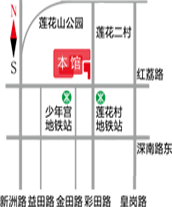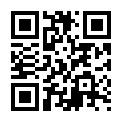
- "Infinite Mapping - On the Road 2020 China Youth Artists' Works Nomination Exhibition and Youth Critics Forum"
-

Click to view Exhibition Name: "Infinite Mapping - On the Road 2020 China Youth Artist Works Nomination Exhibition and Youth Critics Forum"
Exhibition period: December 5th to December 16th, 2020
Exhibition location: Central Hall, Hall C, Hall A, and Hall B on the first floor of Shenzhen Guan Shanyue Art Museum
Hosted by: Shenzhen Guan Shanyue Art Museum, China Artists Association Curatorial Committee
Forum Name: "Infinite Mapping&United Forces"
Organizers: Shenzhen Guan Shanyue Art Museum, China Artists Association Curatorial Committee
Location: Report Hall on the Third Floor of Shenzhen Guan Shanyue Art Museum
Date: December 6th, 2020
Academic hosts: Zhu Xiaojun and Zhang Xinying
This year is the 8th edition of "On the Road", which continues the group concept since "symbiosis" in terms of focus, but shifts from the social intervention of local groups to the virtual nature of group relationships in the post industrial context in terms of problem orientation. We have chosen the keyword "infinite mapping" to pay attention to the unique post industrial art community that has emerged in the context of globalization, commercialization, and informatization, with the development of society, technological progress, and more importantly, the openness of people's concepts since the beginning of the 21st century. The reason why it is called a unique art group approach is not only because of the proportion of non artistic components in the group, but also because of the dynamic changes and uncertainties in the collaborative art production methods among its members; The reason why it is called the post industrial group approach is not only because of the involvement of digital media in group art creation, but also because of its diverse organizational forms - space, projects, organizations, studios, laboratories, etc. - and their uncertain partnerships with each other. This kind of "group" has become a dynamic, open, and fuzzy concept. Compared to traditional group methods, this post industrial group approach is more like a dynamic network composed of different ports. Narrowly defined groups refer to one of the positioned ports through which they can form a broad group relationship with any associated target. Therefore, we borrow the term "mapping" from computer science to define it.
The emergence of this post industrial group approach will inevitably bring many interesting topics. In the era of informatization, digital technology has brought not only a revolution in artistic expression methods, but also a change in the deep relationship between people, people and society, and people and nature (objective objects). "No one" not only fundamentally breaks the program, dissolves authority, but also breaks through the system, allowing art to return to a natural state that is not limited by specific frameworks, pointing to the essence of all things - the infinite. At the same time, it subverts the original intention of traditional art groups to "unite forces" in a "infinite mapping" way, thus presenting a more free, random, and unexpected creative state for group art. This exhibition invites 18 art groups from all over the country to participate together, presenting the current appearance of contemporary Chinese group art from several aspects, including the composition and dissolution of group concepts, long-term and temporary mechanisms of groups, collective and individual characteristics of groups, subjective and objective mapping, etc. At the same time, the "United Forces&Infinite Mapping -2020 Youth Critics Forum" will be held to conduct multi-dimensional targeted research on China's art community from the Republic of China to the present, and use this as a coordinate system to examine and position the current way of post industrial groups, providing valuable reference for the study of the current art ecology.
Infinite Mapping&Joint Forces
The artistic trend since the mid-1980s has had a broad and profound impact on the formation and development of contemporary Chinese art, and has also formed a rich history of contemporary Chinese art development, with artists and critics born in the 1950s and 1960s as the main body. Since the beginning of the new century, changes in the social, political, economic, and cultural environment have led to a new art ecology that is different from the previous development of art history. So, what kind of concept, form, and ecology does the new art ecology present? Where is the new manifestation of new art? What is the turning point of its significance in the development of contemporary art? This is the topic that we intend to focus on and discuss in our series of academic activities.
In 2020, we focused on and explored group art. Group art is not an unfamiliar topic, but at different stages of artistic development, the organizational methods and action goals of groups are also different. People tend to consider group art from the perspective of common ideas and joint forces, such as clubs in the 1930s and 1940s, associations after the 1950s, painting clubs in the late 1970s and early 1980s, and groups after the mid-1980s. The changes in groups at different times also indirectly linked the development process of Chinese art in the 20th century. After entering the 21st century, with the development of society, technological progress, and more importantly, the openness of people's concepts, a special form of post industrial group has emerged on the background of globalization, commercialization, and informatization. The reason why it is called a special form of artistic group is not only because of the proportion of non artistic elements in the group, but also because of the dynamic changes and uncertainties in the collaborative artistic production methods among its members; The reason why it is called the post industrial group approach is not only because of the involvement of digital media in group art creation, but also because of its diverse organizational forms - space, projects, organizations, studios, laboratories, etc. - and their uncertain partnerships with each other. This kind of "group" has become a dynamic, open, and fuzzy concept. Compared to traditional group methods, this post industrial group approach is more like a dynamic network composed of different ports. Narrowly defined groups refer to one of the positioned ports through which they can form a broad group relationship with any associated target. Therefore, we borrow the term "mapping" from computer science to define it.
The emergence of this special group approach has also brought many interesting topics. In the era of informatization, digital technology has brought not only a revolution in artistic expression methods, but also a change in the deep relationship between people, people and society, and people and nature (objective objects). "No one" has brought art back to a natural state without specific framework constraints from concept to practice, pointing to the ontology of derived things - the infinite. So, what kind of new artistic change will the emergence of "infinite mapping" foreshadow? What is the structural relationship formed between it and the different stages of art history, especially the previous stage of development? What new academic issues have emerged? In this forum, we invited 14 young critics to participate in a multi-dimensional and targeted study of the art community in China from the Republic of China to the present day. This serves as a coordinate system for examining and positioning the current post industrial group, providing valuable references for the study of the current art ecology.
Unit 1 Infinite Mapping (9:30-12:00)
Host: Zhang Xinying
Wu Hongliang/"Observations on Collective and Collective Creative Changes"
Hu Bin/"Another Institutional Practice: Art Museums in Social Participatory Art"
Yang Xi/"Groups, Groups, and Brands - Self organization in Contemporary Chinese Art"
Song Zhenxi/"From Personal Symbols to Co writing Code - Discussing Group Creation Methods in Contemporary Art"
Zheng Da/"Research on the Creative Paradigm of Interdisciplinary Art Teams from the Perspective of New Media"
Zhu Xiaojun/"Group Collaboration: How to Build an Open Organization"
Unit 2 Joint Forces (14:30-17:00)
Host: Zhu Xiaojun
Bao Dong/"Reflection and Practice within the Art System: Self organization of Contemporary Chinese Art from 2002 to 2012"
Yin Dan/"The Beiping Art School Group and the Establishment of Sichuan Art School"
Lu Yinghua/"Short Confluence: Art Scene in Beijing in the Late 1970s and Early 1980s"
Wang Zhiliang/"Artistic Groups in Historical Narrative (1985-1987)"
Li Chuan/"From Technology to IP (Intelligent Property)"
You Jiang/"The Power of Space - The Art Practice of" Handshake 302 "from 2013 to 2020"
Jiang Dafang/"Historical Reflections on the Ecological Changes and Contemporary Values of Contemporary Art Creation in Tianjin"
Forum Summary (17:00)
-
2020-12-04



